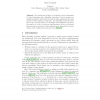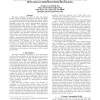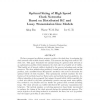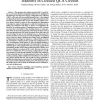201 search results - page 8 / 41 » Reducing the number of clock variables of timed automata |
TACAS
1999
Springer
13 years 11 months ago
1999
Springer
We consider the problem of computing concrete diagnostics for timed automata and reachability properties. Concrete means containing information both about the discrete state change...
VLSID
2002
IEEE
14 years 13 days ago
2002
IEEE
à This paper addresses the problem of static and dynamic variable voltage scheduling of multi-rate periodic task graphs (i.e., tasks with precedence relationships) and aperiodic t...
ICCAD
1993
IEEE
13 years 11 months ago
1993
IEEE
We have proposed an e cient measure to reduce the clock skew by assigning the clock network with variable branch widths. This measure has long been used for \H" clock tree. T...
TVLSI
2008
13 years 7 months ago
2008
Abstract--The quantum-dot cellular automata (QCA) model offers a novel nano-domain computing architecture by mapping the intended logic onto the lowest energy configuration of a co...
PACT
2005
Springer
14 years 1 months ago
2005
Springer
The goal of our investigation is to find automatically the best rule for a cell in the cellular automata model. The cells are either of type Obstacle, Empty or Creature. Only Crea...




